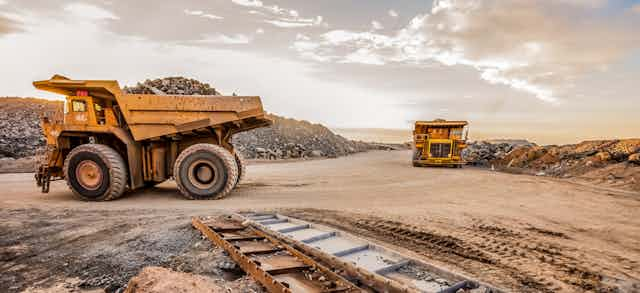Around the globe, concern is mounting about the unfolding climate and ecological catastrophe. Yet the extraction of natural resources through mining and energy projects continues on a large scale, with disastrous environmental consequences.
To understand how this is possible, one place to start is recognising that extraction is not just a physical engineering process. It requires social engineering as well. To be able to function smoothly, extractive corporations and their governmental allies sculpt social conditions. They “manufacture” consent and “manage” dissent towards their ventures.
These industries depend on shaping the perceptions and behaviour of governments, shareholders, consumers, and people living in the areas where large-scale resource extraction occurs.
Usually, the media and academics pay attention when people resist such projects. A well known case is the struggle of the Ogoni people in southeast Nigeria to hold the oil company Shell to account for massive pollution. But it’s also important to notice the way corporations, governments and other elites try to pre-empt opposition.
This means looking beyond obvious conflict and repression, to the less visible and long-term efforts to shape people’s opinions and behaviour. In a recent article in Political Geography, we analyse some of these corporate attempts at social engineering.
The counterinsurgency toolbox
Many of the corporate strategies and tactics to address opposition come from the toolbox of counterinsurgency. There are “hard” techniques, such as direct and indirect coercion, and “soft” tools aimed at “pacifying target populations”.
The “softer” forms often relate to “community relations” work, such as sponsoring local events, medical clinics and other social development programmes. Social investments foster sympathy for extractive projects and dissipate criticism. How can one fight a corporation that provides so many life-affirming opportunities?
The “soft tools” of social engineering also include bureaucratic procedures and practices. One example is legislation acknowledging indigenous people’s right to consent to or reject extractive projects on their land. A growing body of research shows how this legislation eases the way for projects to expand into community territories.
Another way that extraction is made acceptable is through seemingly neutral speech. A case in point is speaking of “lessons learned” in relation to involuntary resettlement for extractive projects. In Mozambique, representatives of the government and extractive multinationals use the language of “learning lessons” from previous forced displacement efforts. This is to prevent opposition to renewed resettlement plans for liquid natural gas extraction in the north of the country.
Directing attention to the technical procedures of displacement and how they can be “improved” takes attention away from displacement itself. And local NGOs become concerned with the resettlement initiatives, instead of critically monitoring the new projects.
Bureaucratic procedures can make it look as if the people affected by resource extraction are participating, influencing decisions and sharing in the benefits. But the procedures actually channel and control dissent. They make it seem as if individuals themselves are responsible for gaining or losing from extractive operations, instead of directing attention to structural power inequalities.
The chimera of ‘green mining’
Another set of social engineering strategies is “green mining”.
Since the 1990s, large-scale extractive companies have started to profile themselves as part of a global transition to sustainability. They engage in biodiversity offsets or draw on and invest in wind and solar power. More recently, corporations have attempted to depict deep-sea mining as sustainable. They claim it has limited impact on deep-sea ecosystems, in particular when compared to the dynamic and volcanic nature of the seabed.
But it’s debatable how much “green extractivism” reduces the ecological harm of large-scale resource extraction.
Offsets are based on the idea that mining corporations can make up for damage in one place by investing in biodiversity protection elsewhere. Research shows that the net benefits of these investments are very limited. Also, it’s difficult to compare the value of what is lost and what is protected.
Biodiversity offsets can be part of political pacification, as shown by the case of Rio Tinto in Madagascar. Through a vast programme of offsetting and restoration, this corporation has managed to counter criticism of its operations. Yet offsets have created conflicts and insecurities for locals. They have also allowed the corporation to extend control over land, people and resources to multiple sites.
The green economy has not only become a way to legitimise large-scale resource extraction. It has also become a new source of profit as corporations invest in market-driven nature conservation, ecotourism, and the production of biofuels and low-carbon energy.
Going forward
Without further economic transformation, the demand for so called “clean energy” will lead resource extraction to soar. For example, the production of minerals such as lithium and cobalt is expected to increase from 2018 by as much as 500% by 2050.
“Green growth” is a false narrative that industries push to continue business as usual. Academics and social movements should expose this narrative to avoid it becoming the cornerstone of climate policy.
To address the ecological and climate crisis, policies fostering degrowth and redistribution are needed. This is the only way to acknowledge the historical responsibility of rich countries and ensure climate justice on a global scale.

